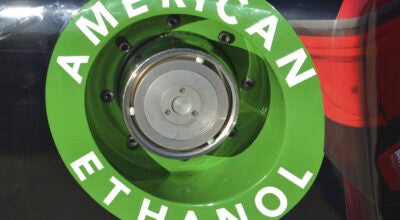Minnesota’s $329M surplus erases previous deficit worries
Published 8:55 pm Wednesday, February 28, 2018
ST. PAUL — Minnesota lawmakers have a $329 million surplus to work with this year, according to an updated financial forecast released Wednesday that reversed previous indications that the state may face a small budget deficit.
Gov. Mark Dayton and legislative leaders entered the session last week expecting some extra cash, despite a December projection that the Legislature would be forced to fill a $188 million shortfall. Lawmakers were skeptical about that supposed deficit, noting it could easily be reversed by an economic surge powered by new federal tax cuts and the anticipated renewal of federal funding for the state Children’s Health Insurance Program.
And that’s largely how it played out. State budget officials said the $517 million swing back into the black was powered by federal reauthorization of funding for the youth health care program and the new tax changes, as well as lower-than-expected state government spending on programs like special education in public schools.
The surplus continues Minnesota’s strong financial performance over the last four years. And it also sets the stage for a three-month legislative session just getting underway.
District 27 Sen. Dan Sparks said he was proud the state’s economy produced a modest state surplus.
“But, it’s important that state lawmakers are good stewards of tax dollars and consider all the facts before deciding what to do with those dollars,” Sparks said. “We do not yet know the long-term impact of federal tax reform on state finances, so I think we should be cautious and not make any hasty reactions to the new forecast. The conversations I have with families, farmers and employers in southern Minnesota is the economic gauge that I rely on.”
While welcome news, that surplus pales in comparison to the $1 billion-plus sums Dayton and lawmakers have grown accustomed to in recent years, potentially constraining the competing priorities of the Democratic governor and Republican-controlled Legislature. Amid the worries that the nation’s long economic expansion could slow, state budget officials warned lawmakers not to assume the financial boon of federal tax cuts would continue.
“We’re seeing the positive impact of tax relief and a responsible state budget,” District 27A Rep. Peggy Bennett said in a said in a press release. “Minnesota’s economy continues to grow while our residents can keep more of their paychecks; it’s a win-win.”
“Individuals and business owners are still figuring out how that new law affects them,” state economist Laura Kalambokidis said.
The extra $329 million gives state officials some extra breathing room — but not much — as they prepare to tackle the headline item for the three-month session: squaring the state’s tax code with recently enacted federal tax breaks. Lawmakers will strive to balance their desire to tax filing without hitting 100,000 or more Minnesota residents with inadvertent tax increases.
The latest Department of Revenue estimate showed the state would collect an additional $460 million in taxes by matching the new federal tax code. Dayton said the modest surplus “should caution all of us that any tax law changes need to have minimal net effects.”
“We’re going to have to balance very carefully,” the governor added.
But Republican legislative leaders celebrated the surplus as a sign that their own, $600 million in new tax breaks approved last year paid off, indicating that they may pair their effort to conform.
“Republicans put more money back in Minnesotans’ pockets, and the state has benefited from that,” House Speaker Kurt Daudt said.
With an updated look at the state’s finances in hand, the real work of the legislative session that started last week can now begin. Dayton wasn’t ready to lay out his specific wish list for the year, saying he’d unveil a detailed budget proposal March 15.
But in the wake of the latest deadly school shooting in Florida this month, both Dayton and Republicans made clear that funding school safety improvements would be a top priority. Senate Republicans have suggested creating a dedicated state account that school districts can use to fortify their schools, though it’s unclear whether that money would come from the surplus or another source.
Wednesday’s economic forecast also showed that the state was poised to enter its next budget-setting cycle in 2019 with a $251 million surplus. Now in the thick of his final year in office, Dayton has stressed his goal of ensuring he doesn’t leave his successor with a budget deficit.
“He’s going to be able to hand off a structurally balanced budget to the next governor,” Senate Minority Leader Tom Bakk said.




